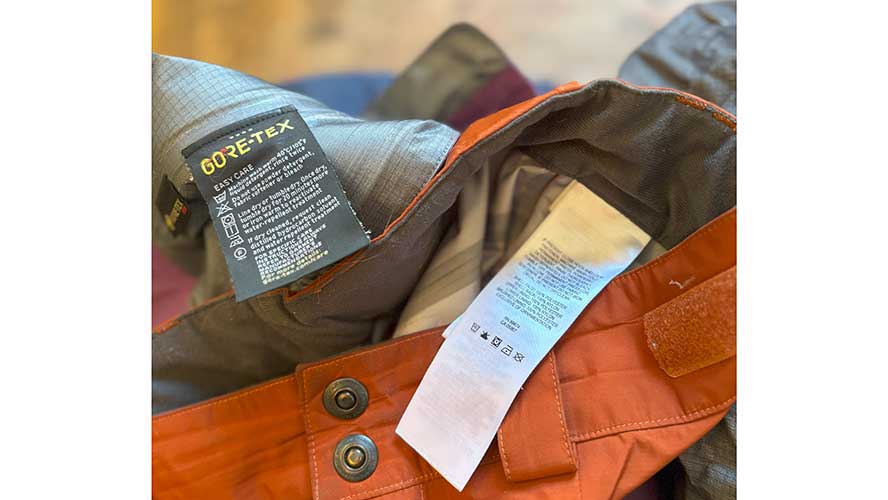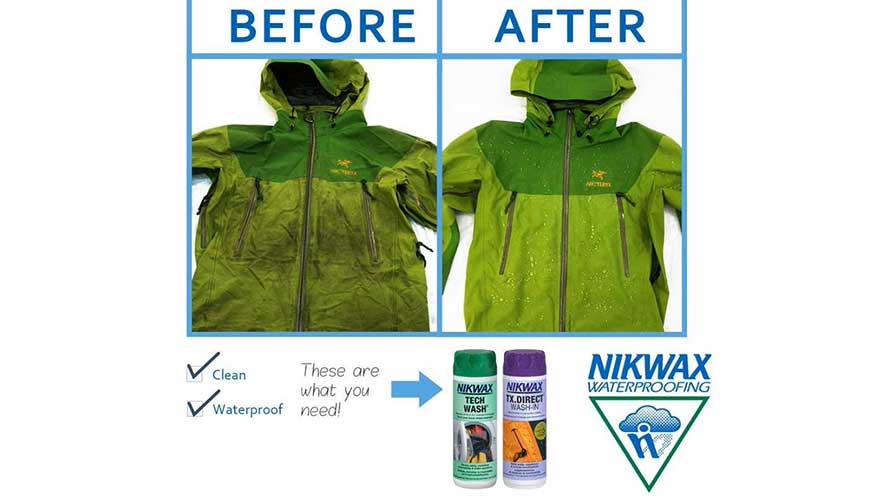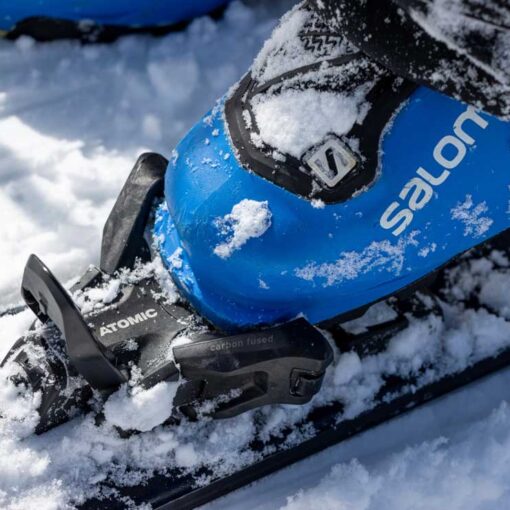Washing your ski outerwear is important, especially when dirt and oil are visible in the face fabric. Washing keeps your clothing looking like new and also helps them maintain a high level of waterproof, breathable performance. Our how to wash ski outerwear guide details all the steps you can take to keep your gear performing its best.
Why Clean Outerwear Matters
More than just a matter of appearance, washing and drying outerwear actually restores the waterproofing and breathability of your garment. That’s because dirt lodged within the fabric’s fibers, or the pores of the waterproof membrane, acts as a conduit for water to penetrate the protective layers. Removing this dirt will prevent lingering water on the fabric surface from seeping inside.
Prepping to Wash
All fabric and insulation types call for different washing methods, so before tossing your ski jacket into the machine, do your research. First, check the garment’s tag where you’ll find instructions for care and washing. Care instructions can be a short step-by-step instruction or a variety of symbols. These laundry symbols indicate water temperature, hand-wash only, and drying time.

If you’re still unsure after reading the garment tag, visit the manufacturer’s website or visit your local gear shop for more info. Some outerwear is not viable for top-loading machines because the agitator can damage the garment. If this is the case, most laundry mats have a variety of front loading washing machines that are a safer option.
When you’re ready to wash, avoid commercial detergents—especially those in powder form because they can clog up the pores of your outerwear’s membrane. This compromises the garment’s ability to release heat and further degrades its waterproofness.
Washing and Drying Ski Outerwear
GORE-TEX
GORE-TEX is made of expanded-Polytetrafluoroethylene (ePTFE), a material that acts as a breathable and waterproof membrane. When the membrane gets dirty, clogged dirt and oil negatively impact the membrane’s ability to protect against precipitation.
Drying the fabric actually rehabilitates the durable water-repellent (DWR) treatment for GORE-TEX garments. Tumble dry for 20 minutes to reactivate the DWR treatment on the outer fabric. After 5-10 cycles, the DWR treatment can no longer be reactivated.
Don’t worry though, manufacturers make products to help reinstate your garment’s waterproofness, even after those initial washing cycles. Nikwax Tech Wash is a water-repellent treatment that both cleans and waterproofs your garment through the washing and drying process. Nixwax products come in spray and wash-in options to help maintain your gear for years to come. Remember these tips when using Nikwax on GORE-TEX:
- Empty all pockets and zip up all the zippers before wash (prevents damage during the wash)
- Remove excess dirt or mud before wash (allows product to penetrate fabric effectively)
- Run the garment through an additional rinse cycle (this ensures all soap is removed)

Down Insulation
Just like you did for washing GORE-TEX, follow the wash instructions on the down garment’s tag or the manufacturer’s website. There are a few critical pieces to remember when washing down insulation:
- Remove any soap residue (do an extra cold water rinse)
- Never use fabric softener (it gets clogged in the fabric’s membrane)
- Only use a front-loading washing machine (the agitator in top-loaders can easily tear the face fabric)
Wash in cold-water with gentle detergent like Nikwax’s Down Wash Direct. Nikwax’s down wash cleans without compromising the garment’s loft or water resistance. After washing, run your garments through another cold-water cycle without detergent to remove any leftover soap. To dry, use a low-heat setting and toss in a few tennis balls to break up any clumps of feathers.
Synthetic Insulation
For best results, hand wash synthetic items. Never use a top-loading washing machine as the agitator can easily tear the face fabric. Use a cool water cycle with a synthetic-specific detergent like Woolite. Note that your garment will be soaked and heavy once washed. Tumble dry low with the tennis ball trick mentioned above and check it often to ensure it isn’t overheating.
Merino Wool
Merino wool is naturally odor-resistant so it can go a little longer between washings. Wash with a mild detergent in cold water, avoid fabric softener and always hang dry. Some manufacturers say it is okay to tumble dry on a low setting, but check your garment tag before tossing it into the dryer.
Stains
Stains are usually from greasy fingers, sunscreen or mud. Use a de-greasing dish soap, like Dawn by dabbing on the garment and hand-rinsing the stained area with warm water. Then, reference the garment tag for complete washing instructions.
When to Wash
When to wash your ski outerwear can vary person to person. If you recreate several times a week and your gear gets a lot of exposure, you may find yourself needing to wash your items a few times during the season to remove dirt, grime and maintain the garment’s technical performance. If you only wear your ski layers a few times a year, and they show minimal dirt and wear, washing them once a year may be all the care you need to maintain the garments.

Throughout the season, take note of any part of your outerwear that feels compromised. Check the hems of your ski pants for tears or mud from trudging through slushy parking lots. If you’ve had a wet season, ensure your garment is still waterproof and keeping you dry, especially large surface areas like thighs, shoulders and chest.
In general, it is a good idea to wash your ski jacket and pants at least once at the end of the season. This removes all the season’s dirt and re-ups the technical properties of your garment before going into storage for the summer. As with all outdoor gear, it is important to take care of it so it can perform out in the elements so you can focus on skiing.
By Jans Experts





